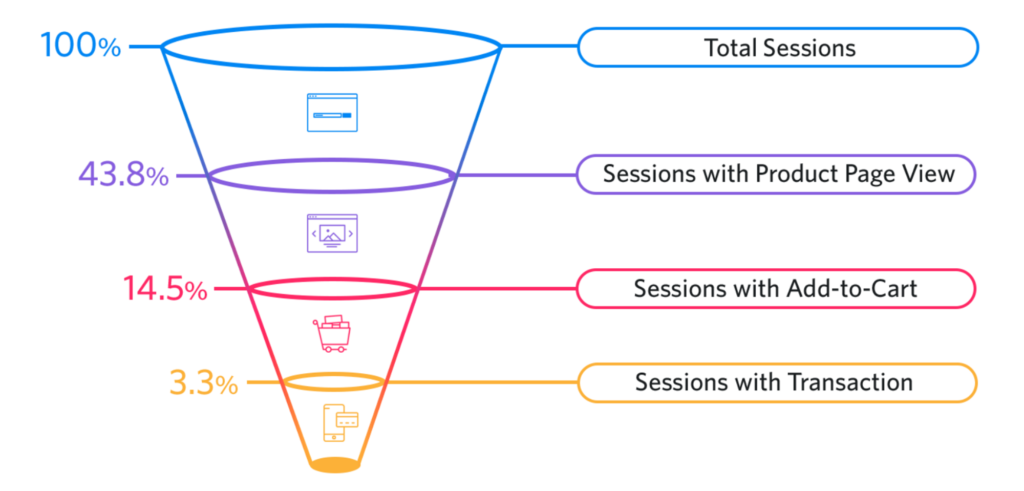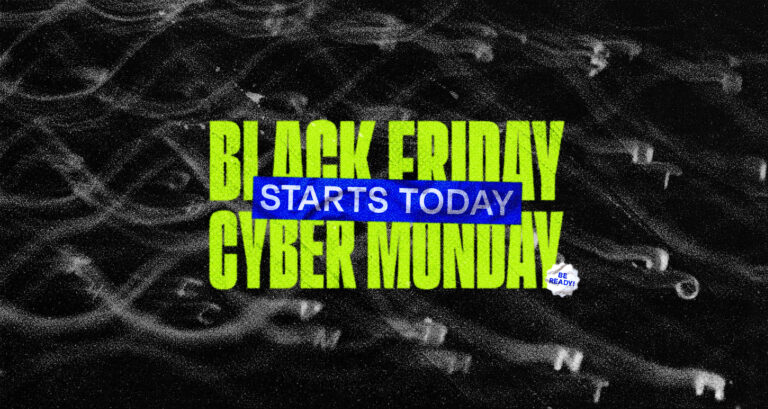If you’ve ever been involved in ecommerce, you’ve likely heard a lot of talk about your site’s “sales funnel”. That said, many folks would struggle to verbalize what their ecommerce site’s funnel actually is – and more importantly, why it is set up the way it is. This is a shame because understanding and optimizing your funnel is one of the best ways to protect and even improve your site’s conversion rate.
Define “Sales Funnel”, please
As Drip defines it, a “funnel”, in the context of an ecommerce site, is “the marketing term that describes the journey potential customers go through from visitor to buyer.” That is to say, the path that a visitor traverses through a website, from the first page they visit to a successful purchase, is the website’s funnel.
Here is a visual representation of a common sales funnel, by Smart Insights:

Kinda looks like an actual funnel, right? That’s because a bunch of people start at the top of the funnel, but only a few people hit the bottom of the funnel. Along the way, many visitors drop off completely, and never complete a purchase.
Why should you care?
Simply put: it can help you make more money per visitor. In the illustration above, only 3.3% of the website’s visitors actually made a purchase. The rest of the visitors dropped out of the funnel at some point. What if you could analyze the weak spots of the visitor’s journey, fix them, and see a higher percentage of purchases? Obviously, that sounds good. Understanding your funnel helps you do just that; you can start to see exactly where your visitors become disinterested and bail. Very valuable information for an ecommerce website.
Now that you have dollar signs in your eyes, let’s learn a little more
In a standard funnel, there are typically 4 phases. Each phase represent’s a milestone in the visitor’s journey, from the first point of contact with the site, to their first purchase.
- Awareness: This phase is at the top of the funnel, and it represents any visitors that are simply gathering information about a brand or product from the highest level, to determine if they have any interest in exploring further.
- Consideration: This phase represents visitors that have established a need or desire for the product and are actively interested in exploring a purchase.
- Intention: This phase represents visitors that have expressed a tangible intent to purchase. A common milestone for this phase is when a visitor adds a product to their cart.
- Action: This phase represents visitors that have actually taken action and made a purchase. Once in this part of a funnel, a loyalty campaign is typically leveraged to incentivize the customer to return and spend more money.
How can you view your site’s sales funnel?
There are a number of ways to do this, but a common one is with Google Analytics (or something similar). If you have analytics set up on your site, you can usually “tag” different actions that visitors take on your site and associate those actions with progression through a funnel. The analytics tool will often have a “visualizer” that will give you a report on how your site’s funnel performs.
On the right, you will see an example of what a “Funnel Analysis” report looks like in Google Analytics 4. As you can see, it provides charts that enable you to see how many visitors complete each phase, compared to the phase before.
Setting this up can be a little in-depth, but it is relatively routine. You can ask your developer to lend a hand, if needed.

What do you do with the information after you can see your site’s funnel?
When you look at a report of your site’s funnel, it will typically show you information regarding to when and/or where your visitors leave the funnel. Your job, as the proprietor of an ecommerce site, is to take that information and make changes to your site to positively impact your customer journey, which should lead to more purchases at the bottom of your funnel.
Now go and use your sales funnel to improve your conversion rate
If you run an ecommerce website, your understanding of your sales funnel is incredibly important, but the good news is, the concept is actually pretty simple. Work with your developer to set up a way to monitor your sales funnel, and then, make optimizations to your customer journey according to what you learn. Then rinse and repeat. If you do this enough, you’ll start seeing your conversion rate go up, and when it goes up, you make more money per visitor.
Who doesn’t want that?


